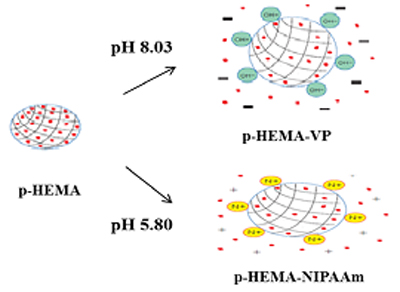Selected Drug Delivery with Contact Lenses

Abstract
In this study, we evaluated contact lenses as drug delivery media and the effect of tear physiological pH on drug release behavior. Anionic or cationic hydroxyethyl methacrylate (HEMA) lenses were polymerized with either vinylpyrrolidone (VP) or N-isopropylacrylamide (NIPAAm). The pH of artificial tears was prepared as between 5.8 and 8.35. One of common treatments, hydroxypropyl methylcellulose (HPMC), to dry eye disease was used as a test drug. As a result, drug releases from anionic 100% p-HEMA and p-HEMA-VP lens were both increased with increasing tear pH. However, released drug amounts from cationic the p-HEMA-NIPAAm lens were decreased with increasing pH. In weak basicity (pH 8.03), the p-HEMA-VP (20 wt%) lens swelled resulting releasing drugs 3.5 times more compared to in weak acidity (pH 5.80). On the other hand, the p-HEMA-NIPAAm (20 wt%) lens de-swelled in basic solution resulting decreased drug release compared to in acidic solution. The hydrogel contact lenses showed various physical properties and drug releasing properties including diffusion coefficients in response to ionization reactions between ionic groups in the lens and pH of solution. It suggests that hydrogel contact lens has potential as selective drug delivery media.
Conclusion
Hydrogel lens can be swelled or de-swelled depending on the pH of the solution. Changes in the lens property such as water content play important role in controlling kinetics in drug release. In this study, hydrogel contact lens for drug delivery was polymer- ized using HEMA and ionic polymer group (PVP, NIPAAm). Results showed that water content of hydrogel contact lens varied depending on ionic type and content of functional groups. Also, it presented that water content of the anionic lens increased with rising pH suggesting enlargement of pore size of hydrogel while the one of cationic lens reduced in the same pH condition. In addition, the maximum released amount of the drug was measured according to the rates of the two kinds of ionic func- tional groups (-VP and -NIPAAm). Calculated diffusion coeffi- cients and expansion index define the mechanism of each drug delivery system varied by pH and ionic groups in structure. In alternate periodic pH condition, the release patterns of each hydrogel lens keep consistently in up to forth cycles at least.
Previous researchers have demonstrated potentials of drug- delivery contact lens which consider the pH change caused by immunity and metabolism of ocular surface (ag. secretion of mucins, corneal edema by followed sleeping or continuous wearing of contact lenses). The pH-responsive lenses can release a certain amount of drug initiated at intended physiological condition by combination of various functional groups with hydrogel contact lens. Also, adjusting drug release by pH is pos- sible with diversifying the ratio of the functional groups. This lens can be effectively applied to treat ophthalmic diseases that cause changes in the pH of eye dryness, allergic conjunctivitis, acute conjunctivitis, etc.
More on Ocular Drug Delivery …
Ophthalmic Drug Delivery Systems for Antibiotherapy
Development of cationic nanocrystals for ocular delivery
A comprehensive insight on ocular pharmacokinetics
Polysaccharides as Excipients for Ocular Topical Formulations
Hyaluronan as a promising excipient for ocular drug delivery
Check our Blog for more articles!


